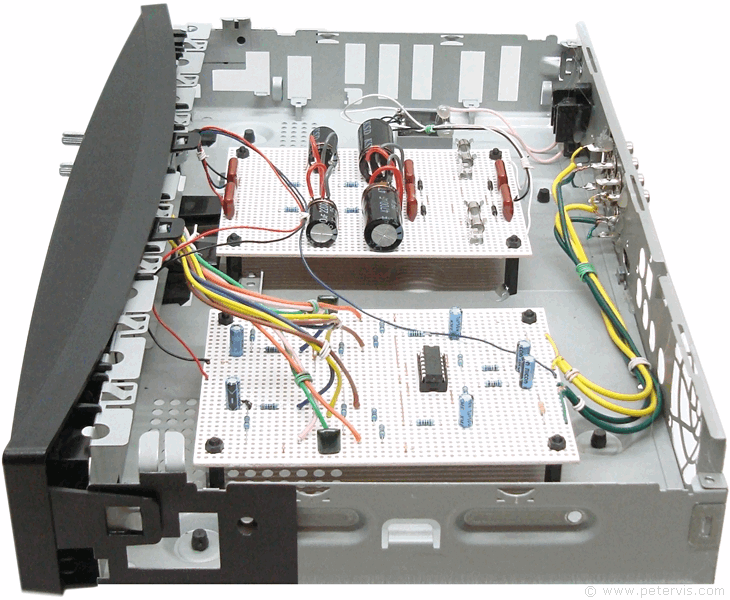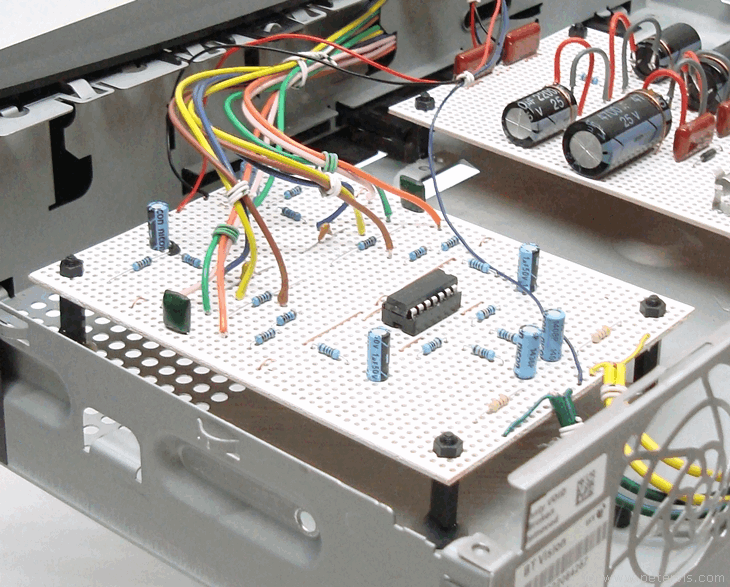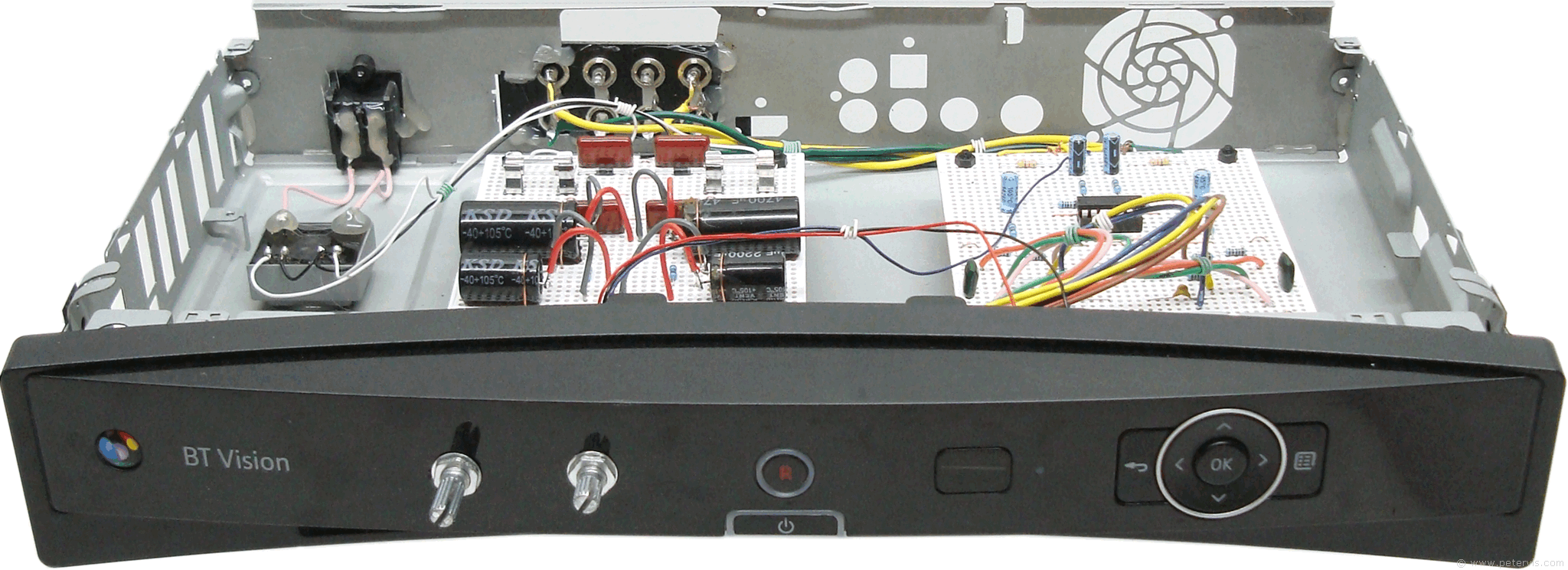Baxandall Bass and Tone Circuit Testing


For the enclosure case, I decided to use this BT Vision box, acquired from my local recycling centre. Unfortunately, these boxes go out of fashion almost every few years, and consequently recycling centres usually have stacks of these waiting to be crushed. As you can see, the box is just the right size to house the two circuit boards and a miniature transformer. I decided to use its original figure-8 mains socket, and the wires from that go to the mains transformer. Ideally I would have preferred one which has an earth connection as well.
To secure the circuit boards I am using plastic hex pillars and nuts that came out of a kit I bought at a thrift store. The transformer is also secured to the metal base with some hot-melt glue, and it is very robust.
Testing

If you are testing this Baxandall circuit with a power amplifier that has built-in bass and tone controls, then it is best to start by setting the amplifier’s bass and tone settings to mid position. This way you can get a good idea of how much bass and treble your Baxandall circuit is producing on its own.
I tested this Baxandall preamplifier by feeding the output of a CD player to it, and then its output to my power amplifier, and was extremely impressed with the level of bass and treble that was produced. In fact, it worked and sounded far better than it had hoped! I also tested it with outputs from a tape deck, tuner, and a turntable RIAA preamplifier and was very impressed. My power amplifier also has built-in bass and treble controls, so when I increased the boost on those as well, it sounded absolutely glorious with double boost! I was getting wonderful creamy bass and crisp treble I had never experienced before.
This Article Continues...
Baxandall Bass and Tone ProjectCircuit and Calculator
Bass and Tone Board Layout
Potentiometer Wiring
Split-Rail Power Supply Circuit
PSU Board Layout
Transformer
Circuit Testing
